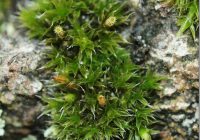Dr Phil Smith’s Wildlife Notes
November 2017
The average November rainfall for Formby is 89mm or 3.5 inches. We just about got that, with 16 rain-days, including a few short downpours between 20th and 23rd. This produced flooding in North Lancashire but I reckon we had about a tenth of their deluge. Some of the deeper dune-slacks began to show surface water but I measured a water-table rise of just 8cm at the Devil’s Hole which remained largely dry. I was amused by a letter to the local paper which blamed the Council for Wicks Lake at Formby Point drying up. This was actually due to low rainfall over many months, for which our Council is hardly culpable.
The stalwart Buckthorn Bashers had five sessions during the month, with usually 10 or 11 volunteers clearing a huge amount of Sea Buckthorn regrowth north of Sands Lake, Ainsdale. The Gems in the Dunes project kindly provided spare loppers, while Sefton Coast & Countryside also helped us conserve energy by taking us along the beach by Landrover for the final event.
I called in at Haskayne Cutting Nature Reserve on 4th, mainly to record mosses and liverworts (bryophytes), finding 11 common species without trying too hard. I was also entertained by a delightful noisy flock of Long-tailed Tits and a Goldcrest giving close views. It was good to see that the Wildlife Trust has cut the damp grassland to encourage the marsh-orchids, these having increased greatly in recent years. I hope to count them again in May/June. Bryophytes also featured in visits to the Ravenmeols woods. It was interesting to see their abundance on both standing and fallen Black Poplars, a prominent species being the rather attractive White-tipped Bristle-moss. The literature mentions that the bark of poplars and willows is rich in nutrients and therefore particularly good for the growth of bryophytes.
The botanical highlight of the month came on 5th when I visited Birkdale Common with Joshua Styles and Natalie Hunt. Our aim was to look for the Annual Knawel which I found there back in November 2010 but have rarely seen since. This species has declined so much in Britain that is now Red-listed as “Endangered”. Amazingly, we re-found it in exactly the same place as before, estimating about 100 plants. The Common was used during the Open Championship in July for a tented village and carpark but, luckily, this didn’t impact the area where the Annual Knawel grows.
On 7th, I attended an interesting talk by John Dempsey describing the Sandwich Tern survey in August on Ainsdale/Birkdale beach. The maximum count was 1500, an impressive number but much lower than the remarkable total of 2800 roosting in early September 2016. This year’s internationally important gathering included a pure-white leucistic individual which had been ringed at Sands of Forvie, Aberdeenshire. Other colour-ringed terns came from Scolt Head, Norfolk and Lady’s Island Lake, Wexford, the latter supporting a breeding colony of about 1200 pairs. A sighting of a ringed bird, possibly from Italy, remains to be confirmed. John also described the worrying extent of roost disturbance, dog-walkers being the main culprits.
One of the great wildlife spectacles of our region is the annual influx of wintering Pink-footed Geese from breeding grounds in Iceland and Greenland. By touring the mossland roads in a car, it is possible to see spectacular flocks feeding on harvest waste or grass, while morning and evening flights to and from night-time roosts fill the air with evocative calls and skeins in distinctive V formations. As I have mentioned before, it is important to stay in one’s car as wild geese will not tolerate a close approach on foot. The most impressive flock I found totalled about 6000 near New Cut Lane, while smaller numbers were seen in several other places within a few miles of my home. A flash of orange legs in a tiny flock of 215 Pinkfeet off New Causeway revealed a Tundra Bean Goose, an uncommon, though regular, visitor from Russia.
I always look forward to receiving the Lancashire Bird Report edited by Steve White. The 2016 report is as good as ever, including Pallid Harrier, a first for Lancashire, and two new species for Britain – a Cackling Goose in 1976 (which I saw with the Pinkfeet) and a Caspian Reed Warbler found dead at Silverdale in 2011 and determined by DNA analysis of its feathers. An article describes the remarkable travels of “Larry”, a Cuckoo fitted with a satellite tag in the Forest of Bowland in June 2015. It has made two successful trips to Africa and back, wintering as far south as Angola, and is now on its way south through Africa again.
Also from the Lancashire & Cheshire Fauna Society is their latest publication The Vertebrates of Lancashire, 142 pages describing the freshwater fish, amphibians, reptiles and mammals of Lancashire and north Merseyside. Many species are illustrated with high quality colour photos, while most have a distribution map showing occurrence in 2 x 2km (tetrad) National Grid squares. Members were sent it free and, at only £12 from NHBS, this is a real bargain.




